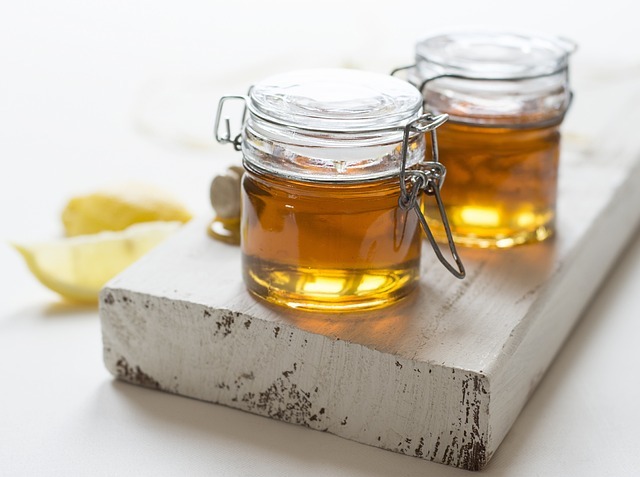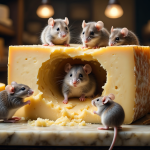
Glucose Syrup vs. Corn Syrup: The Battle of Sweeteners
Sept 25, 2024
Introduction
In the enchanting world of sweetness that graces our tables and fills our favourite treats, two contenders often vie for the spotlight: glucose and corn syrup. While sharing a common foundation in the world of carbohydrates, these liquid sweeteners possess distinctive characteristics that set them apart.
As we delve into the world of these sweeteners, it’s essential to recognize their psychological impact on our perception of food and eating habits. The allure of sweetness is deeply ingrained in human psychology, often associated with comfort, reward, and pleasure. This innate attraction to sweet flavours has been shaped by evolution, but in our modern world of abundant processed foods, it can sometimes lead us astray.
Dr. Marion Nestle, Paulette Goddard Professor of Nutrition, Food Studies, and Public Health at New York University, explains, “High-fructose corn syrup and table sugar (sucrose) are almost identical. The main difference is that the fructose and glucose molecules are bound together in table sugar.” This subtle structural difference belies these sweeteners’ complex journey from field to plate and our equally complex relationship with them.
The origins of these sweeteners lie in the sprawling fields of corn, where nature’s bounty sets the stage for a remarkable transformation. As Michael Pollan, journalist and professor of journalism at UC Berkeley Graduate School of Journalism, describes, “Take surplus corn from America’s heartland, process it into a sweetener, and start selling it to anyone who would buy, all in the name of patriotism.” This process, driven by science and economics, has reshaped the American diet over the past half-century, influencing our taste buds and cultural relationship with food.
At the heart of glucose syrup’s creation lies a fascinating enzymatic ballet. Enzymes, the molecular maestros, orchestrate the breakdown of corn starch into its simpler components. This elegant dance, rooted in the very essence of the corn kernel, yields a liquid sweetener rich in glucose – a fundamental sugar that fuels our bodies.
Yet the story of sweetness is not without controversy. As researchers from Princeton University discovered, high-fructose corn syrup consumption can prompt more weight gain than table sugar or honey. The reasons behind this phenomenon are still being unravelled, but they may relate to differences in how our bodies metabolize fructose and glucose. This finding adds another layer to our complex psychological relationship with sweeteners as we grapple with the desire for sweetness and our health needs.
The Origins and Chemistry of Corn Syrup
Corn syrup is derived from cornstarch through a specialized refining process that extracts and purifies the sugars. The result is a liquid sweetener with a balanced profile of glucose and fructose. This blend of sugars impacts the taste and the functional properties of corn syrup in various food applications.
Concerns About Corn Syrup and Health
While corn syrup is widely used in the food industry, growing concerns exist about its potential adverse health effects, particularly from high fructose corn syrup (HFCS). Some key points raised by experts:
– Dr Robert Lustig, Professor of Pediatrics at the University of California, San Francisco, argues that fructose, abundant in HFCS, is a “chronic, dose-dependent liver toxin” and a significant contributor to obesity, type 2 diabetes, heart disease, and other metabolic diseases.
– A Princeton University research team found that rats with access to HFCS gained significantly more weight than those with access to table sugar, even when their overall caloric intake was the same.
– Dr Mark Hyman, Director of the Cleveland Clinic Center for Functional Medicine, states, “High-fructose corn syrup and other added sugars are a major cause of heart disease, obesity, cancer, dementia, liver failure, tooth decay, and more.”
– The American Heart Association recommends limiting added sugars, including HFCS, to no more than 100-150 calories per day (6-9 teaspoons) to reduce cardiovascular disease risk.
The Culinary Applications of Glucose and Corn Syrup
Glucose syrup is valued in confectionery for preventing crystallization, resulting in smooth textures in candies, frostings, and chocolate coatings. It is also used in baked goods to enhance moisture retention and create a tender crumb.
Corn syrup, with its blend of glucose and fructose, is commonly used in pie fillings, cakes, cookies, and beverages to provide sweetness, moisture, and enhanced flavour. Its lower tendency to crystallize than pure sucrose makes it ideal for creating smooth, gooey textures.
Health Considerations and Consumer Awareness
While glucose and corn syrups have functional culinary properties, their health impacts are a topic of scrutiny. Key points to consider:
Glucose syrup, which is high in glucose, can rapidly raise blood sugar levels. This concerns individuals with diabetes or those monitoring their glycemic response.
Corn syrup contains both glucose and fructose. Fructose is metabolized differently than glucose and, when consumed in excess, has been linked to an increased risk of obesity, diabetes, and non-alcoholic fatty liver disease.
– Both syrups contribute to overall caloric intake. The American Heart Association recommends limiting added sugars to no more than 100-150 calories per day to maintain a healthy weight and reduce disease risk.
– A 2015 study found that 68% of barcoded food products in the US contain caloric sweeteners, with corn syrup being the most common. This highlights the importance of reading labels to identify added sugars.
As consumers become more health-conscious, there is a growing demand for transparency in food labelling and a shift towards alternative natural sweeteners like honey, maple syrup, and dates. However, the role of glucose and corn syrups in the food industry remains significant due to their unique functional properties.
The Culinary Applications of Glucose and Corn Syrup
Glucose syrup and corn syrup are versatile sweeteners used in various culinary applications. Glucose syrup prevents crystallization, producing smooth textures in candies, frostings, and chocolate coatings. It also enhances moisture retention in baked goods. Corn syrup, with its blend of glucose and fructose, is used in pie fillings, cakes, cookies, and beverages to provide sweetness, moisture, and enhanced flavour.
Health Considerations: Insights from Experts
While glucose and corn syrups have beneficial culinary properties, their health impacts are a topic of concern among health experts:
– Dr Robert Lustig, Professor of Pediatrics at the University of California, San Francisco, warns that fructose, abundant in high-fructose corn syrup (HFCS), can contribute to obesity, diabetes, and liver disease when consumed in excess.
– Dr. Mark Hyman, Head of Strategy and Innovation at the Cleveland Clinic Center for Functional Medicine, states that added sugars like HFCS are a significant contributor to chronic diseases such as heart disease, obesity, and liver failure.
– A study by researchers at the University of California, Davis, found that consuming HFCS can lead to a higher risk of cardiovascular disease than consuming glucose alone.
– The Obesity Society recommends limiting added sugars, including HFCS, to less than 10% of daily caloric intake to reduce the risk of obesity and related health issues.
Consumer Awareness and Dietary Choices
As consumers become more health-conscious, there is a growing demand for transparency in food labelling and a shift towards alternative natural sweeteners. However, glucose and corn syrups remain significant in the food industry due to their unique functional properties.
– A 2019 International Food Information Council survey found that 80% of consumers are trying to limit or avoid added sugars.
– The FDA has mandated that food labels explicitly list added sugars, including HFCS, to help consumers make informed choices.
– Health organizations like the American Heart Association recommend limiting added sugars to no more than 100-150 calories per day to maintain a healthy weight and reduce disease risk.
Conclusion: The Bittersweet Truth About Syrups
As we unravel the complex tapestry woven by glucose and corn syrup, it becomes clear that the narrative extends beyond mere culinary applications and delves into health, well-being, and mass psychology. While these syrups have undeniably played a significant role in shaping our culinary landscape, the mounting evidence of their potential dangers cannot be ignored.
The widespread use of these sweeteners in processed foods has created a lemming-like effect in consumer behaviour. Just as these small Arctic rodents are often mistakenly believed to follow each other blindly, even to their demise, consumers have collectively embraced these sweeteners without fully understanding their impact. This mass psychology phenomenon has led to a societal addiction to sweetness, with glucose and corn syrups becoming ubiquitous in our diets.
Health experts have sounded the alarm about the excessive consumption of these syrups, particularly high-fructose corn syrup (HFCS). Dr. Robert Lustig, a renowned pediatric endocrinologist, has been a vocal critic of HFCS, labelling it as a “poison” that contributes to the obesity epidemic and a host of metabolic disorders. His research has shown that the fructose in HFCS can lead to insulin resistance, increased belly fat, and a higher risk of chronic diseases like diabetes and heart disease.
Similarly, Dr Mark Hyman, a leading functional-medicine expert, has warned about the dangers of added sugars like HFCS and glucose syrup. He emphasizes that these sweeteners can contribute to inflammation, oxidative stress, and the development of chronic illnesses. Dr. Hyman advocates a shift towards natural, whole-food sweeteners that offer additional nutritional benefits.
Break free From the collective
To break free from this collective behaviour, we must embrace out-of-the-box thinking. This means challenging the status quo and reevaluating our relationship with sweeteners. It involves looking beyond the convenience and low cost of glucose and corn syrups to consider their long-term impact on our health and society.
The growing body of scientific evidence supports these concerns. A study published in the American Journal of Clinical Nutrition found that consuming HFCS can lead to a higher risk of cardiovascular disease compared to consuming glucose alone. Another study by researchers at Princeton University revealed that rats fed HFCS gained significantly more weight than those fed table sugar, even when their overall caloric intake was the same.
In light of these findings, it becomes crucial for consumers to make informed choices regarding sweeteners. Natural alternatives like honey, maple, and date syrup offer sweetness and various beneficial compounds. Honey, for instance, contains antioxidants and has been shown to have antibacterial properties. Maple syrup is rich in minerals like zinc and manganese, while date syrup provides fibre and potassium.
By opting for these natural sweeteners in moderation, we can still enjoy the pleasures of sweetness while minimizing the potential health risks associated with highly processed syrups. It’s a matter of balancing and being mindful of our choices when navigating the grocery aisle.
Moreover, this shift towards more natural sweeteners represents a broader conscious consumerism movement. It’s an opportunity to break away from the herd mentality and make choices that align with our health goals and values. Doing so benefits our well-being and sends a powerful message to food manufacturers about our preferences and priorities.
In conclusion, the story of glucose and corn syrups is a cautionary tale about the unintended consequences of mass-produced food additives. It underscores the importance of critical thinking and individual responsibility in dietary choices. As we move forward, let’s embrace a more nuanced and informed approach to sweeteners, prioritising health, sustainability, and mindful consumption over blind adherence to industry trends.










